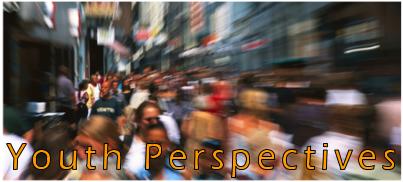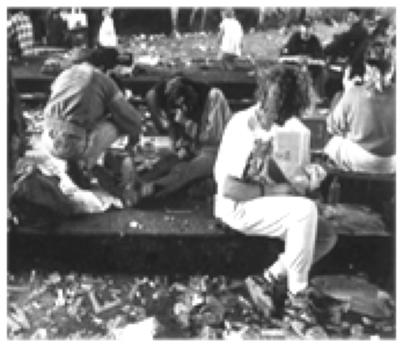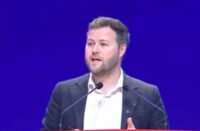 [notice]A fortnightly column by Elfrieda Fleischman, Concerned Young People in SA (CYPSA). [/notice]
[notice]A fortnightly column by Elfrieda Fleischman, Concerned Young People in SA (CYPSA). [/notice]
Rehabilitation works, ‘harm reduction” does not
Even after years of dependency, drug addiction can come to an end as seen in the lives of the following young people.
Nkosikhona’s testimony
“I had a friend with whom I used to smoke or use drugs with and we couldn’t go to sleep without smoking. My friend got an opportunity to come to the Concerned Community for help. When he went back home, no one told me that he had been set free but I saw it myself. I sat down with him and I urged him to take me to them. He did and that is how I met them. I have been here for a week, I have learned that if there is sin in my life I need to bring it to the Light and I need to go to someone that can pray with me. The Lord has also taught me that no matter how great the sin that I have done, when I earnestly bring them to the Light as they are, I will find forgiveness and the He forgets about them all. I have learned patience and to give my Creator all my sorrows and all my burdens.”
Testimony of Sakhile
“I came to the Concerned Community for help in July. The people from this organization looked well after me. It was a joy for me to see how the people lived and for the first time I went to a church service. Previously I disliked going to church, but now it is the other way around. Through going to church I learned a lot, for example, how to respect others and confession of sin that helped me to cleanse and purify my heart. At the end of August I went back home and I saw my old friends that I used to smoke with. My friends looked at me and said I had changed completely and said: “You are not the old Sakhile we knew”. Others urged me to use drugs again but I refused and I said I do not want to go and roll in the mud again. Some explained: “You are proud” but I told them that the Lord can deliver them as well. “If one is determined to change”, I told them, “you will change”. I also said that it depends on what you want in life and that by giving your whole life to the Living God makes a difference in a person’s life.
We as the Concerned Young People of SA actively reach out to drug addicted youth in our communities. As we work at grassroots level, our hearts ache when we see the damage drugs have caused amongst our youth. What concerns us the most is the current push to employ “harm reduction” as in the current Drug Master Plan of 2012-2016. Could it be that some people stand to make a lot of money out of it and legally — at the cost of many a youth?
Drugs and harm reduction
According to the National Drug Master Plan there is a push to supply free needles and drugs to addicts under the term “harm reduction”.
What is harm reduction?
Harm reduction is an effort to reduce damage done to addicts and the community through the introduction of controlling measures into the environment in which illicit drugs are obtained and used.
What does harm reduction imply?
It implies needle exchange programmes, providing free drugs, methadone maintenance programmes (long term provision of methadone/suboxone), establishment of shooting galleries and needle parks.
Has harm reduction worked anywhere?
Scotland 1 – Methadone programme failure rate 97%; cost £25m annually; methadone addicts increased 400% in a decade; only 3,4% of addicts stopped drugs in 3 years and NO drop in crime rate. [This figure is much less than the 29,4% addicts that stopped drugs after 9 months in rehab or went cold turkey without methadone.]
Switzerland 2 — 1987: Zurich permitted drugs; 1987-1992: Regular drug users in Zurich increased from a few hundred to more than 20 000 in one needle park.
Sweden 3 — It is known that the experiments with controlled distribution of narcotics between 1965 and 1967 led to a sharp increase in the number of addicts and to the development of a huge black market. After two years, the experiment was stopped as a result of pressure from a public greatly alarmed by a number of deaths that had occurred. Sweden has since, with success, switched to a policy of resolutely combating the problem

What about Drug Reduction?
By supplying free needles and drugs, the government of SA will give out a double message to the youth: “It’s OK to do drugs in a public park, it’s free, try it… but do not smoke in a public place!”
Why not rather follow a complete do-away policy with illegal drugs? This will send out a clear message to our youth: “We are finished and done with drugs, once and for all!”
Steps to freedom: there is hope
Even after years of dependency, drug addiction can be stopped. The Concerned Community of SA has interviewed addicted street children, who have been successfully rehabilitated.
Messages from these ex-addicts are:
“Those that have knowledge, will not be happy about harm reduction legislation, but those without knowledge will be happy”
“The others will never get free from drugs then!”
“Why do they not rather build care centres, give us food and teach us work skills, if they really care for us?”
“Now street children will use needles as weapons!”
The final legislation that is passed regarding “harm reduction” will therefore send a clear message to the community as to whether legislators truly care for SA citizens.
Sources:
1 Report by Prof. Neil McKeganey, professor of Drug Misuse Research at the University of Glasgow 2007;2009
2 Nel Solomon, Findings on Needle Park: Switzerland’s Social Experiment with Legalizing Drugs, Report to Governor Schaefer, Drug and Alcohol Abuse Commission (Maryland)
3 Association for the Advancement of Psychological Understanding of Human Nature VPM, Argumentum against Drug Legalization, A discussion Aid, A contribution in Support of the Swiss People’s Referendum for a “Youth Without Drugs”,
Help is available from the Concerned Community of SA:
Help Line: (032) 481 5742, 071 478 5712/ 073 433 7840, cypsouthafrica@gmail.com, www.preciousyouth.org.za






